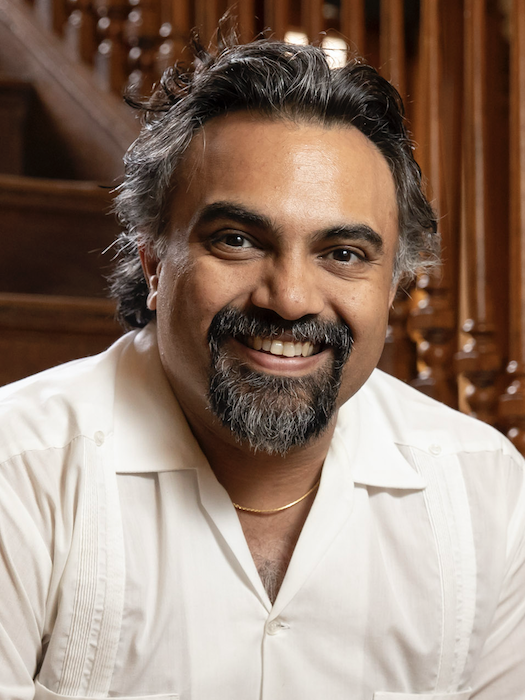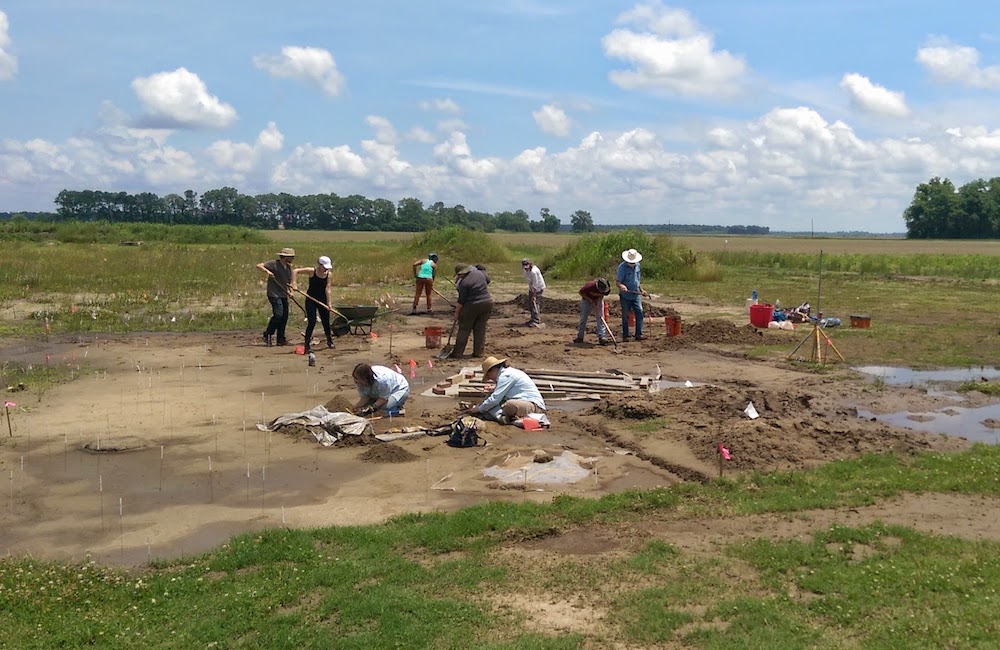Archaeologist unearths history in the Mississippi River Valley

FSU assistant professor of anthropology Jayur Mehta.
In the farmlands of the Mississippi River Valley, earth is continuously cleared and leveled — a result of the region’s booming agriculture industry. But beneath the soil lies an important piece of American history, one a Florida State University anthropology professor is working to piece together.
In “Mound building and summit architecture at the Carson site, a Mississippian mound center in the southeastern United States,” FSU assistant professor of anthropology Jayur Madhusudan Mehta analyzes archaeological and anthropological findings from the Carson site, once a large Native American village and monumental center located in the Yazoo Basin of northwestern Mississippi.
Mehta’s research documenting the early occupation of the site was published last month in North American Archaeologist.
He first became involved in researching Carson while working for the state of Mississippi several years ago, where his office would field phone calls if citizens noticed farming or other activity near known archeological sites.
The Carson site is approximately one mile long and was first occupied by Native Americans from the St. Louis region who migrated downriver and established a settlement. Over the following centuries, the site’s occupants built earthen mounds, constructed a village and began harvesting corn. Today, the surrounding region is largely used for agricultural purposes. A farming endeavor initially planned for the Carson site ultimately prompted the research excavation.
“The farming operation, through the course of moving three to four feet of soil off the surface, uncovered a village with houses and burials,” Mehta said. “I became involved as a representative of the state of Mississippi to consult with Native American groups, remove disturbed burials, and to work with the Natural Resources Conservation Service, the University of Mississippi, the University of Alabama and other universities to study the site.”
The State of Mississippi then worked with the nonprofit Archaeological Conservancy to purchase the land and began a preservation effort. As part of the Carson Mounds Archaeological Project, excavations were conducted from 2012 to 2015, and researchers used ground-penetrating radar and a gradiometer to look for remains of ancient buildings. At ‘Mound D,’ where Mehta’s research was focused, the use of this technology was met with little success. A subsequent decision to remove large amounts of poison ivy from the mound site ultimately led to discovery of the first artifacts.
Further excavations uncovered several buildings, some superimposed on each other. Teams took more than 80 sediment cores across the Carson landscape, excavated several trenches and used radiocarbon dating to analyze the approximate age of the samples.
Mehta’s research offers insight into the purpose of Mound D, the Carson site’s largest mound by volume. The building of Mound D by non-elites may have provided social and ideological benefits, as well as protection from raiding, warfare, and subsistence buffers through organized food storage. The elevation of the landform also protected the site from flooding.
He believes the actual construction process of the large earthen mounds and their role in social and political relationships reveals much about how societal hierarchies and community formed in early settlements.
“I propose that people came together as communities to build mounds and monuments, and that was a way of making a community. When that collective work becomes appropriated, or taken over by someone or a small, elite group of people, this monument no longer represents community, or an egalitarian ethos,” Mehta said. “Rather, it represents a hierarchal relationship between elites and commoners, between people who have control over this monument and live on top of it, and those who live below it.”
In the 1800s, for example, it was common for people – especially the wealthy – to build homes atop the mounds. The landscape in the area was otherwise flat and people were aware of what they were building on. However, settlers at the time widely ignored the historical significance of Native American artifacts.
“Early settlers in the Mississippi River Valley did not think of Native American villages as a part of their collective history. They were thinking about colonization, owning their own land by displacing indigenous people and building their own empires and states,” Mehta said.
Mehta’s article references various studies published about the region, including research from Greg Wilson, an associate professor of archaeology at the University of California Santa Barbara who specializes in archaeology of agricultural societies of eastern North America. Wilson said there are several reasons Mehta’s findings are important and contribute to the broader understanding how mound construction and use in the Mississippian world.
“The Carson site was a persistent place on the landscape and figured prominently into political and religious dynamics in the region over the long term,” Wilson said. “Future researchers are now aware of the importance of this mound center and will be able to incorporate Mehta's research into broader arguments about monumentality, place making, and social inequality in the Mississippian world and beyond.”
Mehta hopes research such as this helps shift people’s mindset when they hear the term American history and understand the need to preserve Native American heritage sites and artifacts that are part of the nation’s collective cultural past.
“American history begins 15,000 years ago when the first Native Americans crossed over from Siberia into the New World,” Mehta said. “These places deserve our attention, our efforts and preservation, just as much as we would strive to preserve colonial Williamsburg or Jamestown.”

Students from universities across the U.S. take part in the Tulane University Carson Mounds Archeological Project excavations under now-FSU
anthropology assistant professor Jayur Mehta.

